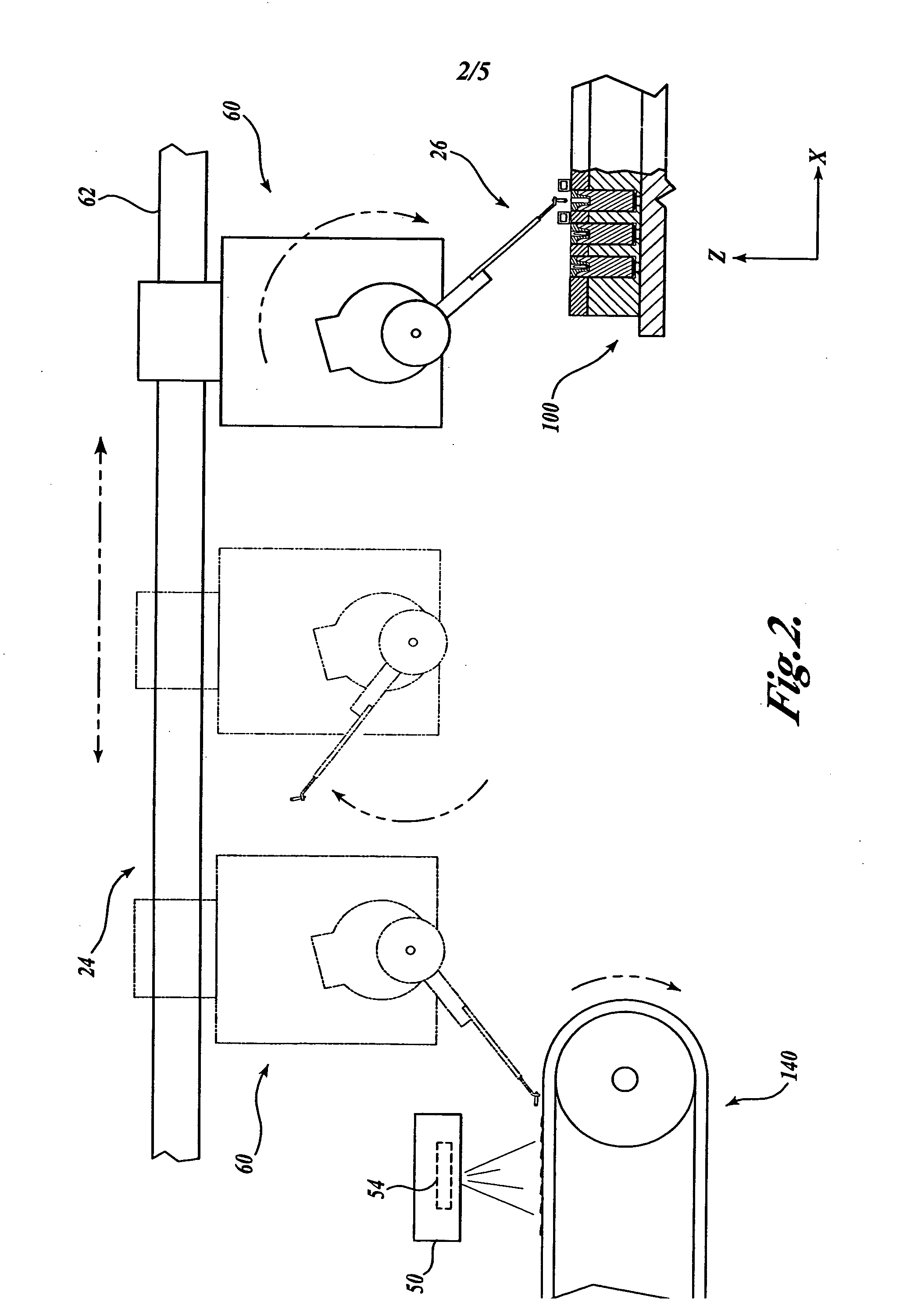System and method of embryo delivery for manufactured seeds
a technology of manufactured seeds and embryos, applied in the field of manufactured seeds, can solve the problems of difficult control of slow production of new plants by sexual reproduction, and difficulty in controlling the amount of force applied to the embryos, so as to reduce the surface tension between the two, improve the ability of embryo release, and reduce the surface tension
- Summary
- Abstract
- Description
- Claims
- Application Information
AI Technical Summary
Benefits of technology
Problems solved by technology
Method used
Image
Examples
Embodiment Construction
[0019] The present invention will now be described with reference to the figures where like numerals represent like elements. FIG. 5 is a block diagram illustrating one embodiment of an embryo delivery system 20 constructed in accordance with the present invention. The embryo delivery system 20 is composed of an embryo orientation assembly 22, a transfer assembly 24, and an embryo reception assembly 26. In operation, the embryo delivery system 20 retrieves plant embryos one at a time from a position on the manufactured seed production line and places each embryo into a separate growing medium, such as a seed coat. To this end, the orientation assembly 22 orients the plant embryos to be grasped by the transfer assembly 24. The transfer assembly 24 sequentially grasps the embryos from the orientation assembly 22 and moves the embryos to a second location where the embryos are received by the embryo reception assembly 26. The embryo delivery system 20 further includes a control system ...
PUM
| Property | Measurement | Unit |
|---|---|---|
| length | aaaaa | aaaaa |
| length | aaaaa | aaaaa |
| angle | aaaaa | aaaaa |
Abstract
Description
Claims
Application Information
 Login to View More
Login to View More - R&D
- Intellectual Property
- Life Sciences
- Materials
- Tech Scout
- Unparalleled Data Quality
- Higher Quality Content
- 60% Fewer Hallucinations
Browse by: Latest US Patents, China's latest patents, Technical Efficacy Thesaurus, Application Domain, Technology Topic, Popular Technical Reports.
© 2025 PatSnap. All rights reserved.Legal|Privacy policy|Modern Slavery Act Transparency Statement|Sitemap|About US| Contact US: help@patsnap.com



